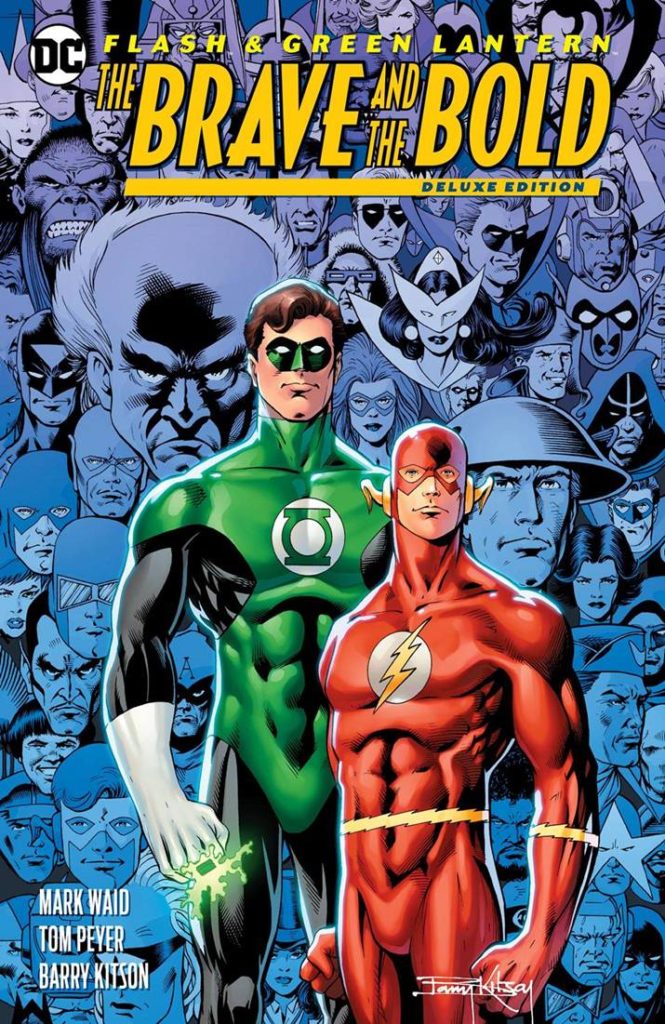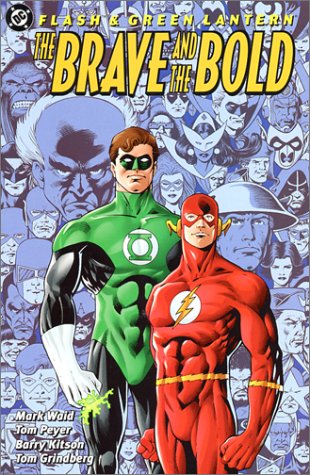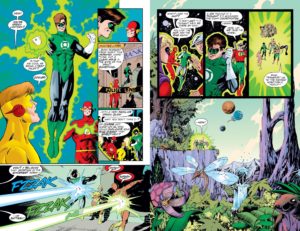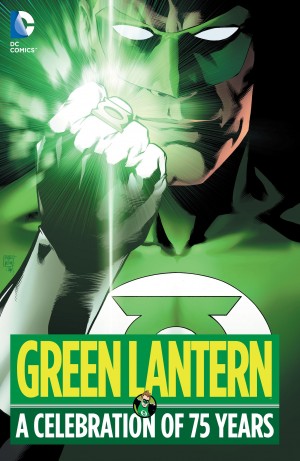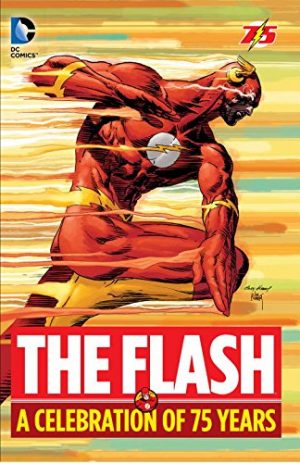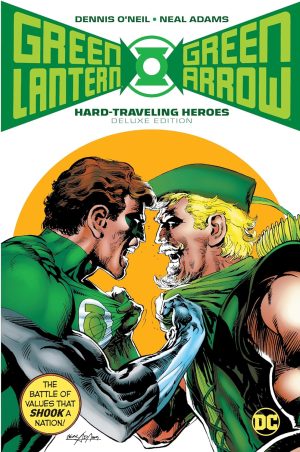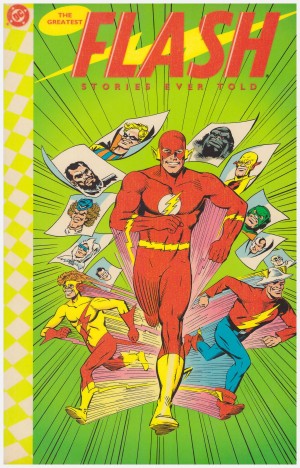Review by Ian Keogh
Much connected the Barry Allen version of the Flash and Hal Jordan’s Green Lantern. In the 1950s they were both introduced as upgrades on earlier superheroes with those names, and as they graduated to their own series edited by Julie Schwartz, each was treated relatively lightly in science based stories featuring colourful villains. Each had their adventures illustrated by an arch stylist, Carmine Infantino and Gil Kane respectively, and each guest-starred in the other’s title several times, firmly establishing Allen and Jordan as friends outside their Justice League adventures. Their guest appearances became a tradition that continued until the mid-1970s, and the friendship strongly resonated with the young Mark Waid. 25 years after their final substantial team-up he and co-writer Tom Peyer had the opportunity to construct six new adventures for the pair slotted between their old team-ups.
As Waid notes in his introduction, seen as a whole, the careers of Flash and Green Lantern were wildly different. Barry Allen never changed his job and married the woman he’d known for years, a progression of dull stability if you choose to look at it that way, while Hal Jordan worked his way through a succession of jobs and girlfriends. He’s constantly short of cash and an impulsive superhero, while the old Flash comics had a running joke about the fastest man alive being forever late. The broad strokes apart, neither character was very nuanced until the 1970s, so Waid and Peyer exploit the tone of the original stories over their new chapters, working in the nutty alien races that turned up in Green Lantern (and occasionally Flash) assorted villains and plenty of guest stars.
Barry Kitson doesn’t try to imitate Infantino or Kane, but keeps the art relatively simple early on, then moving into more decorative imagery. He’s better at expressions than figures. The one chapter he doesn’t pencil, he inks the layouts of Tom Grindberg, far better known for imitating Neal Adams, which feeds into the period of early 1970s social relevance covered in the story.
For all their obvious love of the original material, Waid and Peyer move beyond pastiche by paying far more attention to the way in which the characters interact, not only with each other, but with associates and friends. There is an occasional tendency to over-exaggerate, their version of Green Arrow as a man able to start an argument in an empty room wearing thin very rapidly. There’s no little irony in the following story featuring the threat of an alien who amplifies personality traits. For the most part, though, everyone who loved the Flash and Green Lantern of the 1960s (or the various reprints since) ought to enjoy this outing, whether in the 2001 paperback or the 2019 hardcover reissue.
